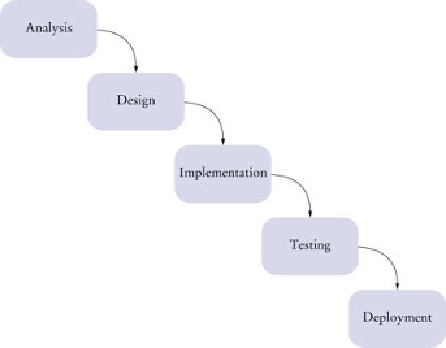Java Reference
In-Depth Information
In the implementation phase, you write and compile program code to implement the
classes and methods that were discovered in the design phase. The output of this
phase is the completed program.
In the testing phase, you run tests to verify that the program works correctly. The
output of this phase is a report describing the tests that you carried out and their
results.
In the deployment phase, the users of the program install it and use it for its intended
purpose.
When formal development processes were first established in the early 1970s,
software engineers had a very simple visual model of these phases. They postulated
that one phase would run to completion, its output would spill over to the next phase,
and the next phase would begin. This model is called the waterfall model of software
development (see
Figure 1
).
The waterfall model of software development describes a sequential process of
analysis, design, implementation, testing, and deployment.
Figure 1
The Waterfall Model



